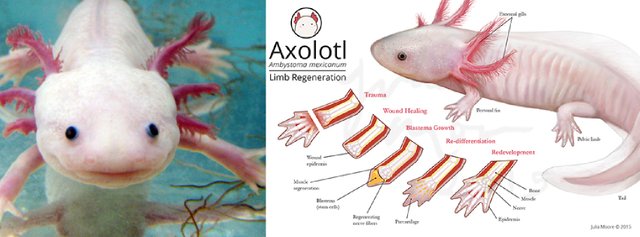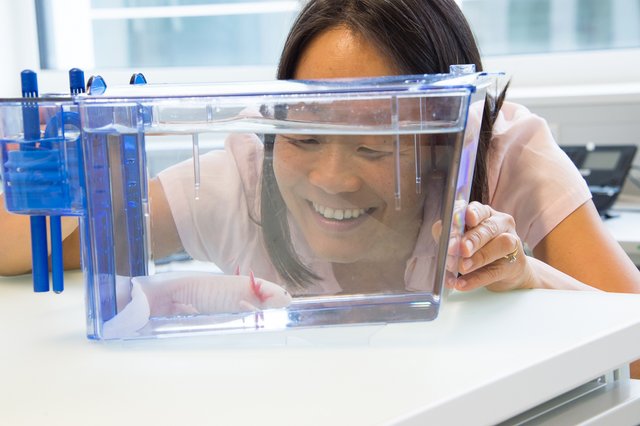If there is a creature that, due to its biological characteristics, has attracted the interest of scientists, it is the salamander, since it is the only vertebrate animal capable of regeneration.
In the group of these amphibians, the Axolotl-Mexican (Ambystoma mexicanum) stands out for its extraordinary processes to regenerate amputated limbs and other organs and tissues of the organism.

It has been observed, for example, that if these animals lose a limb, they are able to regenerate it in a matter of weeks, with all their bones, muscles and nerves in the appropriate places.
Even more fascinating, the researchers say, is the axolotl's ability to repair his spinal cord when it suffers an injury and make it work as if it had not been damaged.
You can also repair other tissues, such as retinal, and heal wounds without leaving scars.

Not only that. This amphibian, which is in danger of extinction in its natural habitat, has also attracted the interest of researchers because of the relative ease with which it can reproduce.
For this reason, for about 150 years scientists have been cultivating these animals in the laboratory and trying to discover the secrets of their extraordinary biological processes and their potential applications in human medicine.
For example, in the repair of brain or spinal cord injuries and the prevention of heart scars.
Now an international team of scientists discovered one of its secrets: the axolotl has the largest genome that has been sequenced so far, much larger than the human.
This amphibian has 32,000 million base pairs of DNA, 10 times larger than the human genome, which has 3.2 billion base pairs of DNA.
"This finding will be a powerful tool to study the molecular basis of limb regeneration and other forms of regeneration," says the study published in the journal Nature.
Sequencing
Dr. Elly Tanaka from the Research Institute of Molecular Pathology in Vienna has managed to grow one of the largest populations of axolotls in the laboratory.

Together with his team he managed to develop advanced molecular tools for the axolotl, which revealed the protein coding sequences in the animal's genome.
Thus, scientists were able to identify the cells responsible for restarting the regeneration process and describe the molecular pathways that control these processes.
But to understand in detail how regeneration works and why this is such a limited process in most species, researchers needed access to amphibian genomic data to study its evolution and gene regulation.
This had not been completed due to the enormous size of this genome: 32,000 million base pairs of DNA, until now.
"Now we have the map (genetic) in our hands to investigate how structures as complicated as those of the extremities can be regenerated," says Sergei Nowoshilow, co-author of the study.
"This is a decisive moment for the community of scientists who work with the axolotl, a true milestone in a research adventure that began more than 150 years ago," he adds.
The complete genome of the axolotl, the largest that has been decoded until now, was sequenced with the collaboration of researchers using new software systems developed specifically for the study.